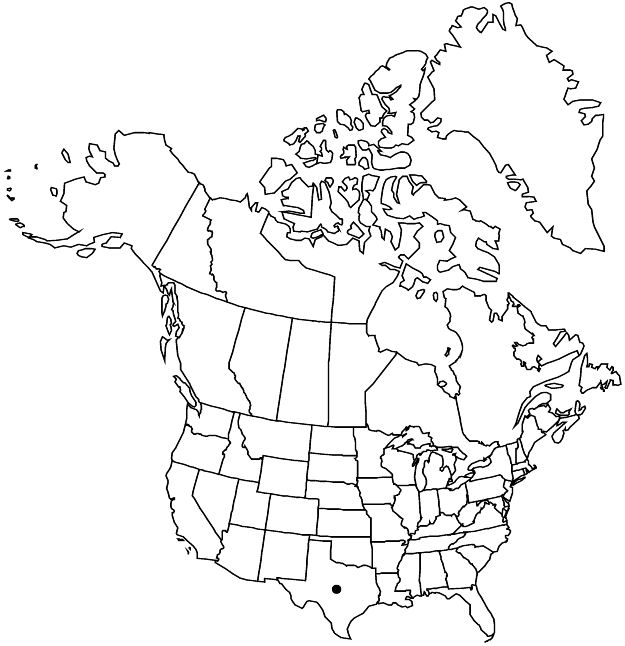Difference between revisions of "Phyllanthus niruri"
Sp. Pl. 2: 981. 1753.
FNA>Volume Importer |
FNA>Volume Importer |
||
| Line 12: | Line 12: | ||
|name=Phyllanthus lathyroides | |name=Phyllanthus lathyroides | ||
|authority=Kunth | |authority=Kunth | ||
| − | }}{{Treatment/ID/Synonym | + | }} {{Treatment/ID/Synonym |
|name=P. niruri subsp. lathyroides | |name=P. niruri subsp. lathyroides | ||
|authority=(Kunth) G. L. Webster | |authority=(Kunth) G. L. Webster | ||
| Line 30: | Line 30: | ||
|elevation=60–120 m. | |elevation=60–120 m. | ||
|distribution=Mexico;West Indies;Central America;South America. | |distribution=Mexico;West Indies;Central America;South America. | ||
| − | |discussion=<p>Phyllanthus niruri is found in the flora area only in DeWitt, Fayette, and Lavaca counties (and historically from Gonzales County, where it appears to be extirpated; L. E. Brown and S. J. Marcus 1998); it is widespread in the American tropics. Like P. urinaria, it is widely used in folk medicine and is the subject of intense pharmacological research. Plants from outside the West Indies and Caribbean northern South America often have been segregated as subsp. lathyroides; the differences are trivial and recent authors (G. L. Webster 2001; V. W. Steinmann 2007) did not subdivide the species.</p> | + | |discussion=<p><i>Phyllanthus niruri</i> is found in the flora area only in DeWitt, Fayette, and Lavaca counties (and historically from Gonzales County, where it appears to be extirpated; L. E. Brown and S. J. Marcus 1998); it is widespread in the American tropics. Like <i>P. urinaria</i>, it is widely used in folk medicine and is the subject of intense pharmacological research. Plants from outside the West Indies and Caribbean northern South America often have been segregated as subsp. lathyroides; the differences are trivial and recent authors (G. L. Webster 2001; V. W. Steinmann 2007) did not subdivide the species.</p> |
|tables= | |tables= | ||
|references= | |references= | ||
| Line 54: | Line 54: | ||
|publication year=1753 | |publication year=1753 | ||
|special status= | |special status= | ||
| − | |source xml=https://jpend@bitbucket.org/aafc-mbb/fna-data-curation.git/src/ | + | |source xml=https://jpend@bitbucket.org/aafc-mbb/fna-data-curation.git/src/8f726806613d60c220dc4493de13607dd3150896/coarse_grained_fna_xml/V12/V12_752.xml |
|genus=Phyllanthus | |genus=Phyllanthus | ||
|species=Phyllanthus niruri | |species=Phyllanthus niruri | ||
Revision as of 14:49, 18 September 2019
Herbs, annual, monoecious, 1–5 dm; branching phyllanthoid. Stems: main stems terete, not winged, glabrous; ultimate branchlets subterete, not winged, glabrous. Leaves on main stems spiral, scalelike; stipules not auriculate, brown. Leaves on ultimate branchlets distichous, well developed; stipules not auriculate, brown; blade elliptic, 11–20 × 4.5–9 mm, base obtuse to rounded, apex obtuse, both surfaces glabrous. Inflorescences cymules or flowers solitary, unisexual, proximal with 3–7 staminate flowers, distal with 1 pistillate flower. Pedicels: staminate 1.2–1.8 mm, pistillate spreading in fruit, 4–7 mm. Staminate flowers: sepals 5(–6), pale green, flat, 1.5–3 mm; nectary extrastaminal, 5(–6) glands; stamens 3, filaments connate 1/2 length. Pistillate flowers: sepals 5, green, flat, 3–3.5 mm, pinnately veined; nectary annular, unlobed. Capsules 3.5 mm diam., smooth. Seeds uniformly brown, 1.5–1.8 mm, verrucose. 2n = 26 (Costa Rica).
Phenology: Flowering and fruiting late summer–fall.
Habitat: River and stream banks, sand.
Elevation: 60–120 m.
Distribution

Mexico, West Indies, Central America, South America.
Discussion
Phyllanthus niruri is found in the flora area only in DeWitt, Fayette, and Lavaca counties (and historically from Gonzales County, where it appears to be extirpated; L. E. Brown and S. J. Marcus 1998); it is widespread in the American tropics. Like P. urinaria, it is widely used in folk medicine and is the subject of intense pharmacological research. Plants from outside the West Indies and Caribbean northern South America often have been segregated as subsp. lathyroides; the differences are trivial and recent authors (G. L. Webster 2001; V. W. Steinmann 2007) did not subdivide the species.
Selected References
None.